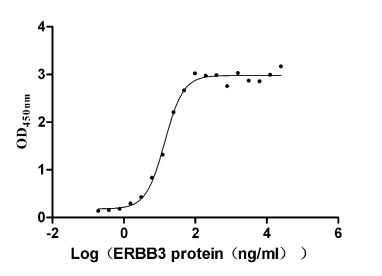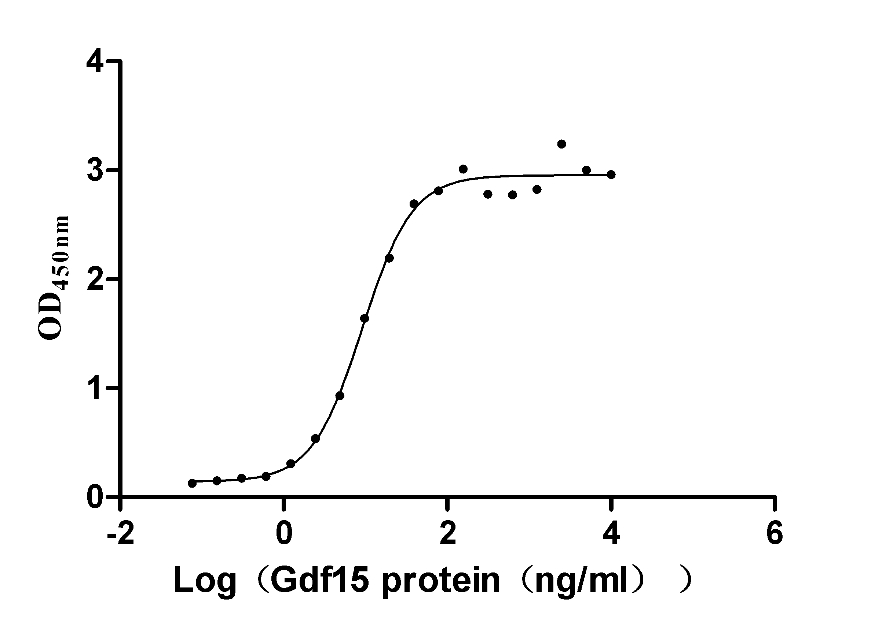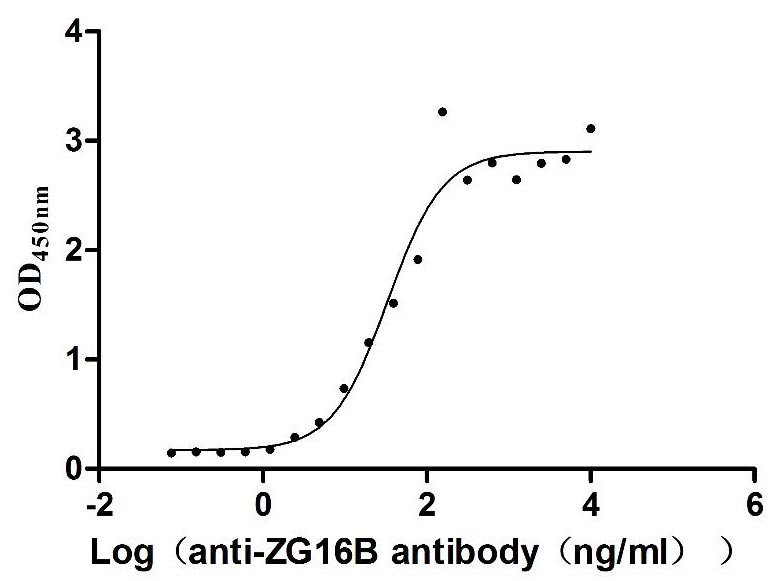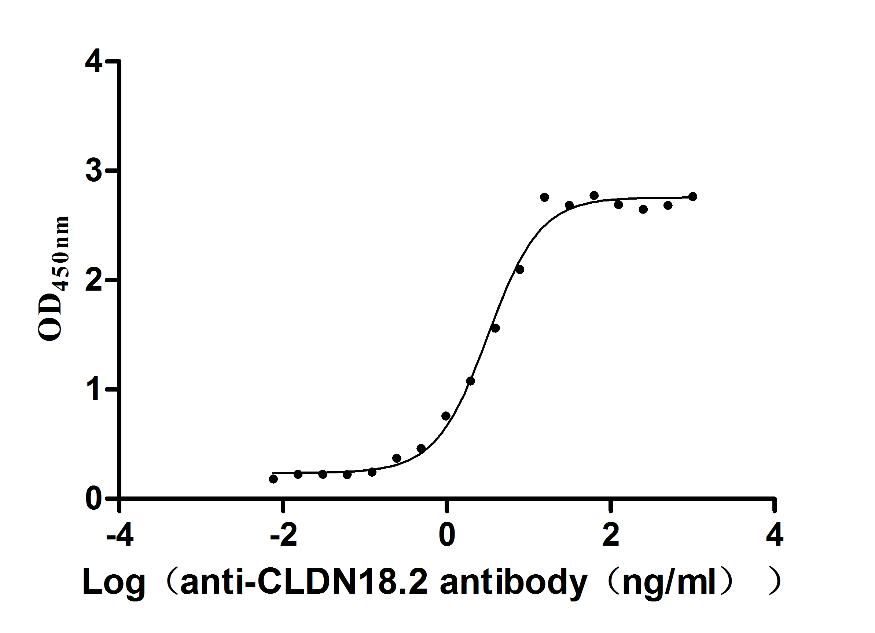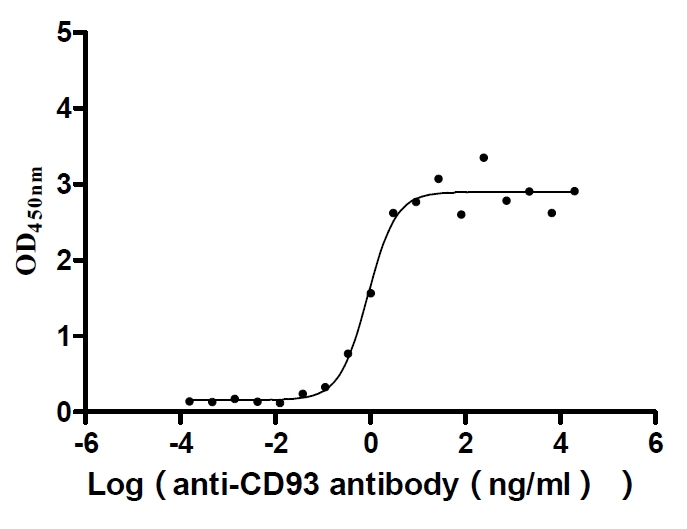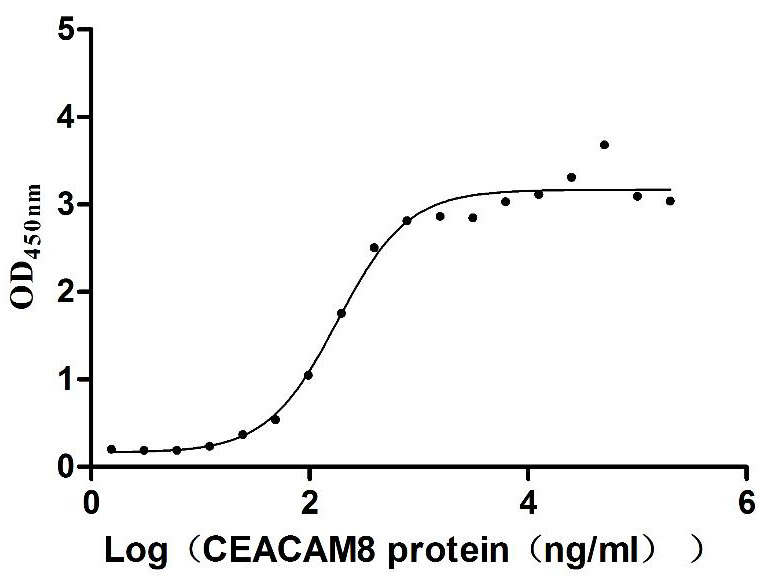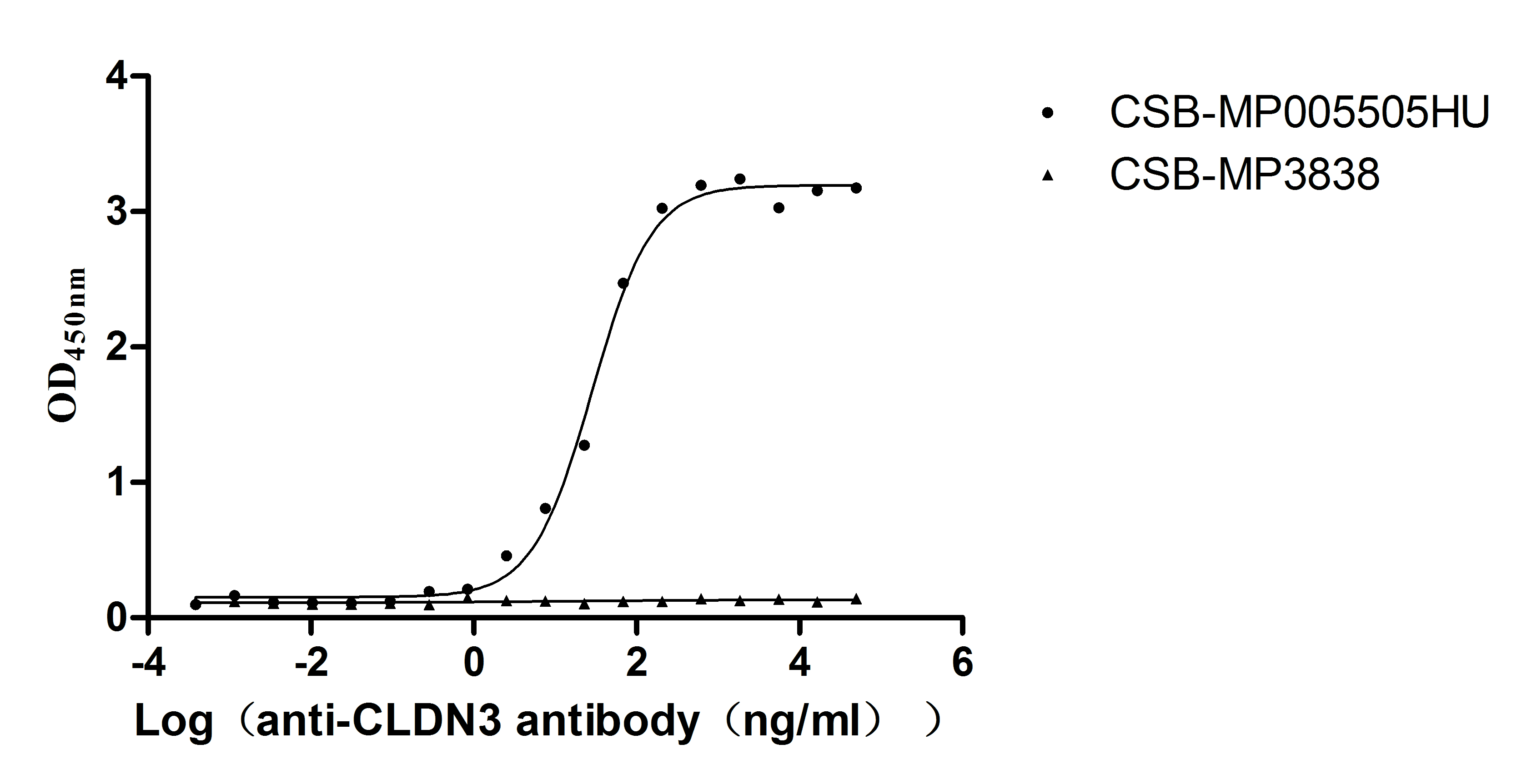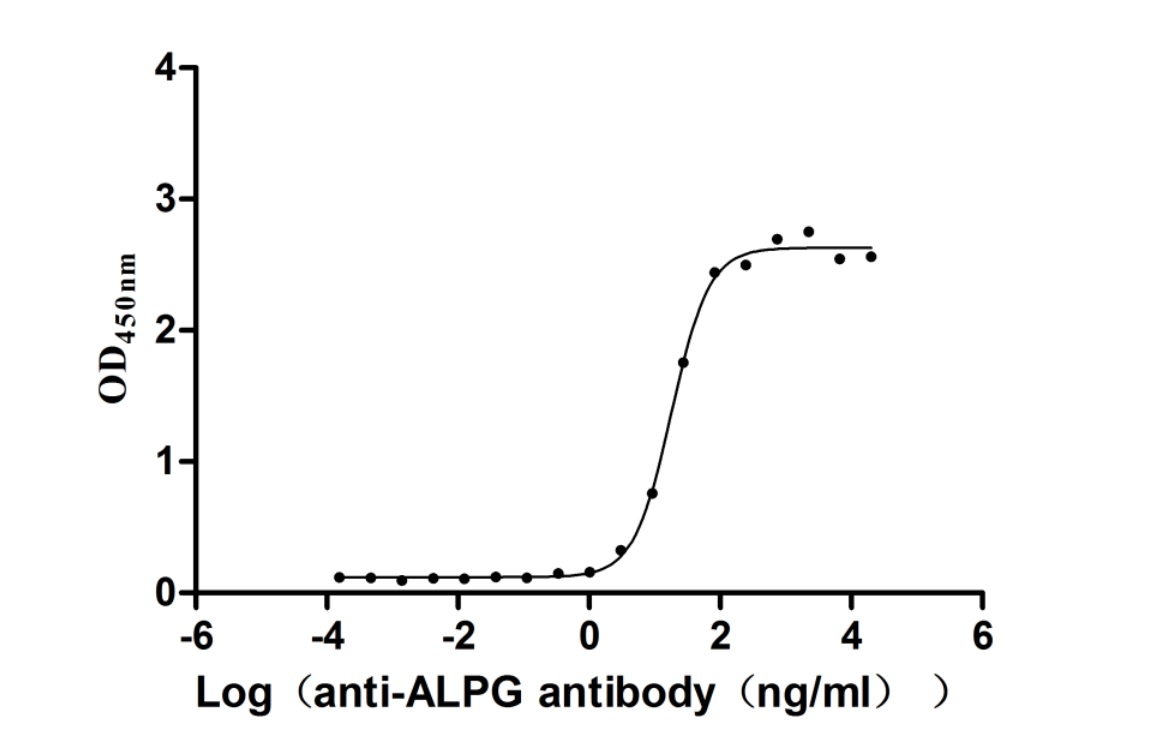Recombinant Cell death abnormality protein 1 (ced-1), partial
-
中文名稱:Recombinant Cell death abnormality protein 1(ced-1) ,partial
-
貨號(hào):CSB-YP894086CXY
-
規(guī)格:
-
來源:Yeast
-
其他:
-
中文名稱:Recombinant Cell death abnormality protein 1(ced-1) ,partial
-
貨號(hào):CSB-EP894086CXY
-
規(guī)格:
-
來源:E.coli
-
其他:
-
中文名稱:Recombinant Cell death abnormality protein 1(ced-1) ,partial
-
貨號(hào):CSB-EP894086CXY-B
-
規(guī)格:
-
來源:E.coli
-
共軛:Avi-tag Biotinylated
E. coli biotin ligase (BirA) is highly specific in covalently attaching biotin to the 15 amino acid AviTag peptide. This recombinant protein was biotinylated in vivo by AviTag-BirA technology, which method is BriA catalyzes amide linkage between the biotin and the specific lysine of the AviTag.
-
其他:
-
中文名稱:Recombinant Cell death abnormality protein 1(ced-1) ,partial
-
貨號(hào):CSB-BP894086CXY
-
規(guī)格:
-
來源:Baculovirus
-
其他:
-
中文名稱:Recombinant Cell death abnormality protein 1(ced-1) ,partial
-
貨號(hào):CSB-MP894086CXY
-
規(guī)格:
-
來源:Mammalian cell
-
其他:
產(chǎn)品詳情
-
純度:>85% (SDS-PAGE)
-
基因名:ced-1
-
Uniprot No.:
-
別名:ced-1; Y47H9C.4Cell death abnormality protein 1
-
種屬:Caenorhabditis elegans
-
蛋白長(zhǎng)度:Partial
-
蛋白標(biāo)簽:Tag?type?will?be?determined?during?the?manufacturing?process.
The tag type will be determined during production process. If you have specified tag type, please tell us and we will develop the specified tag preferentially. -
產(chǎn)品提供形式:Lyophilized powder
Note: We will preferentially ship the format that we have in stock, however, if you have any special requirement for the format, please remark your requirement when placing the order, we will prepare according to your demand. -
復(fù)溶:We recommend that this vial be briefly centrifuged prior to opening to bring the contents to the bottom. Please reconstitute protein in deionized sterile water to a concentration of 0.1-1.0 mg/mL.We recommend to add 5-50% of glycerol (final concentration) and aliquot for long-term storage at -20℃/-80℃. Our default final concentration of glycerol is 50%. Customers could use it as reference.
-
儲(chǔ)存條件:Store at -20°C/-80°C upon receipt, aliquoting is necessary for mutiple use. Avoid repeated freeze-thaw cycles.
-
保質(zhì)期:The shelf life is related to many factors, storage state, buffer ingredients, storage temperature and the stability of the protein itself.
Generally, the shelf life of liquid form is 6 months at -20°C/-80°C. The shelf life of lyophilized form is 12 months at -20°C/-80°C. -
貨期:Delivery time may differ from different purchasing way or location, please kindly consult your local distributors for specific delivery time.Note: All of our proteins are default shipped with normal blue ice packs, if you request to ship with dry ice, please communicate with us in advance and extra fees will be charged.
-
注意事項(xiàng):Repeated freezing and thawing is not recommended. Store working aliquots at 4°C for up to one week.
-
Datasheet :Please contact us to get it.
靶點(diǎn)詳情
-
功能:Involved in programmed cell death, also called apoptosis, in both somatic and germ cells. Acts by recruiting ced-6 to phagosomes which enables actin-dependent cytoskeletal reorganization and subsequent engulfment of the apoptotic cell corpse. Has a role in the association of ppk-3 and rab-7 with the phagosomal surface which is necessary for the incorporation of lysosomes to phagosomes during phagosome maturation. Activates the expression of unfolded protein response genes, which are involved in the immune response to live bacteria.
-
基因功能參考文獻(xiàn):
- Phagocytosing muscle cells promote neuronal regeneration and remove neuronal debris through distinct biochemical functions of CED-1. PMID: 30451835
- The formation of such halos depends on the integrins PAT-2/PAT-3, UNC-112 and the GEF protein UIG-1, but not on the canonical ced-1/6/7 or ced-2/5/12 signaling modules. PMID: 24632947
- CED-7 and TTR-52 may promote the efflux of PS from apoptotic cells through the generation of extracellular phosphatidylserine (PS) vesicles, which lead to exoplasmic leaflet (exPS) expression on phagocytes via TTR-52 and CED-1 to facilitate cell corpse clearance. PMID: 22727702
- TTR-52 is therefore the first bridging molecule identified in C. elegans that mediates recognition of apoptotic cells by crosslinking the PtdSer 'eat me' signal with the phagocyte receptor CED-1. PMID: 20526330
- study found that the intracellular protein sorting complex, retromer, was required for cell corpse clearance by mediating the recycling of CED-1; retromer probably acted through direct interaction with CED-1 in the cell corpse recognition pathway PMID: 20133524
- Phagocytic receptors, which were thought to act specifically in initiating engulfment, also control phagosome maturation through the sequential activation of multiple effectors such as dynamin, PI(3)P, and Rab GTPases. PMID: 18351800
- Unfolded protein response genes regulated by ced-1 are required for Caenorhabditis elegans innate immunity. PMID: 18606143
- CED-1/SCARF1 and C03F11.3/CD36 are beta-glucan binding receptors and define an evolutionarily conserved pathway for the innate sensing of fungal pathogens. PMID: 19237602
顯示更多
收起更多
-
亞細(xì)胞定位:Cell membrane; Single-pass type I membrane protein. Cytoplasmic vesicle, phagosome membrane; Single-pass type I membrane protein.
-
組織特異性:Expressed in engulfing cells and syncytium hypodermal cells. Ced-7 is necessary for clustering around cell corpses prior to engulfment.
-
數(shù)據(jù)庫鏈接:
Most popular with customers
-
Recombinant Human Receptor tyrosine-protein kinase erbB-3 (ERBB3), partial (Active)
Express system: Mammalian cell
Species: Homo sapiens (Human)
-
Recombinant Mouse GDNF family receptor alpha-like (Gfral), partial (Active)
Express system: Mammalian cell
Species: Mus musculus (Mouse)
-
Recombinant Human Pancreatic adenocarcinoma up-regulated factor (ZG16B) (Active)
Express system: Mammalian cell
Species: Homo sapiens (Human)
-
Recombinant Macaca fascicularis Claudin 18.2 (CLDN18.2)-VLPs (Active)
Express system: Mammalian cell
Species: Macaca fascicularis (Crab-eating macaque) (Cynomolgus monkey)
-
Recombinant Human Complement component C1q receptor (CD93), partial (Active)
Express system: Mammalian cell
Species: Homo sapiens (Human)
-
Recombinant Human Carcinoembryonic antigen-related cell adhesion molecule 6 (CEACAM6) (Active)
Express system: Mammalian cell
Species: Homo sapiens (Human)
-
Recombinant Human Claudin-3 (CLDN3)-VLPs (Active)
Express system: Mammalian cell
Species: Homo sapiens (Human)
-
Recombinant Human Alkaline phosphatase, germ cell type (ALPG) (Active)
Express system: Mammalian cell
Species: Homo sapiens (Human)


